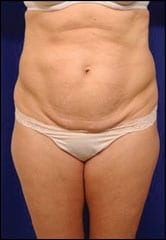11/09/06
For the 170,000 morbidly obese patients who undergo bariatric surgery each year in the US, the stomach-reducing procedure is just the first step back to health and self-esteem.
"Massive post-surgical weight loss leaves most with unsightly excess folds of skin and fat, and in some ways the patient can actually look worse, not better," says Jason A. Spector, MD, assistant professor of surgery in the Division of Plastic Surgery at Weill Cornell Medical College, and assistant attending surgeon at NewYork-Presbyterian Hospital/Weill Cornell Medical Center in New York City.
According to federal statistics, nearly 30% of adult Americans are obese, and 5% bare morbidly or severely obese. Many are resorting to bariatric surgery to limit their food intake and absorption and enhance weight loss.
Experts estimate that in 2005 alone, US plastic surgeons performed nearly 56,000 post-operative body-contouring procedures on patients who had undergone bariatric surgery.
"We typically recommend that a patient’s weight stabilizes for at least 3 to 6 months before they undergo these contouring procedures," Spector explains. "Surgeries such as tummy tucks, breast augmentation, and thigh, buttocks, and arm lifts can be done separately over time, or all at once during marathon 8- or 9-hour operations involving multiple surgical teams."
Post-bariatric surgery body contouring is not without its risks. These risks may include blood loss during the procedure itself and a very small risk of clots. A minority of patients may also experience abdominal hernias.
[www.newswise.com, November 7, 2006]



